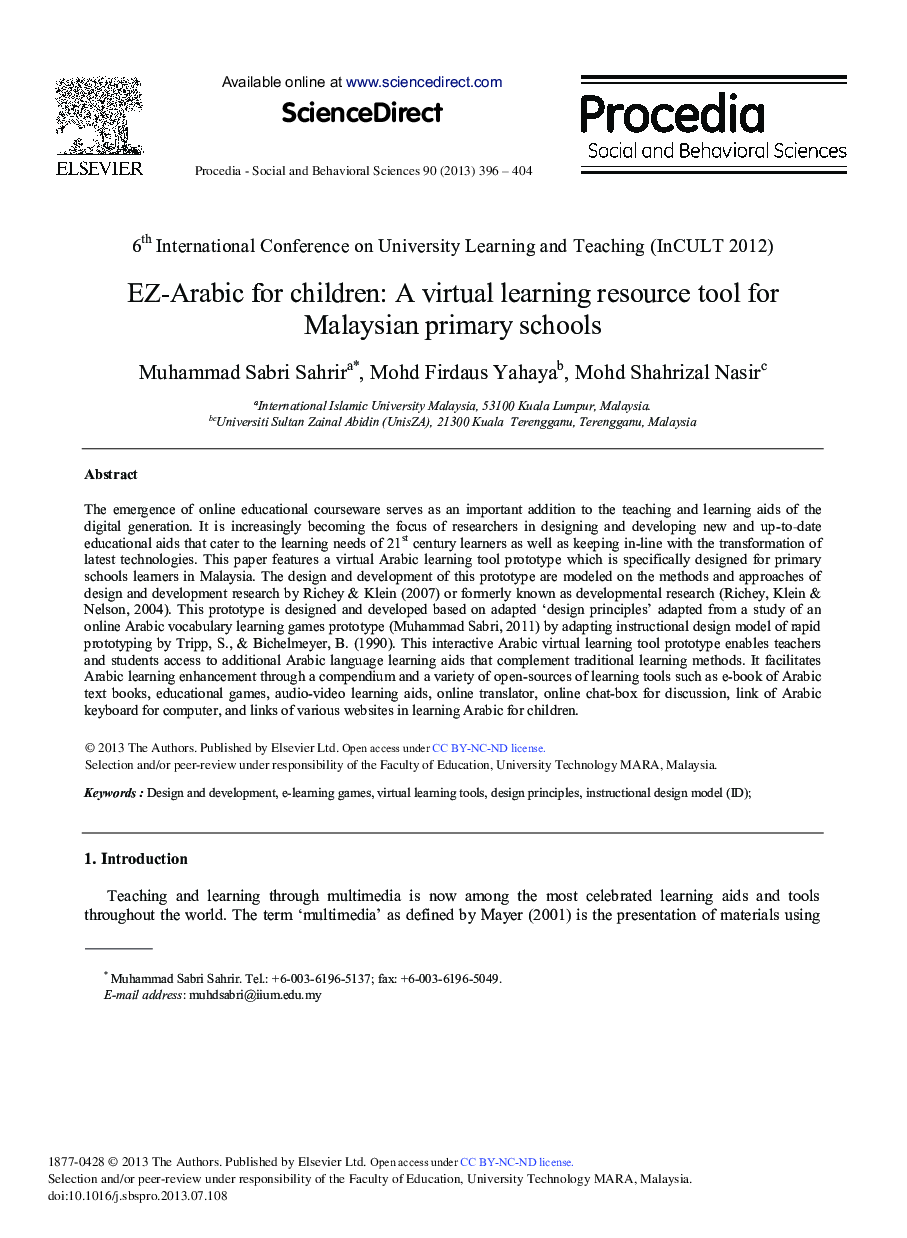| کد مقاله | کد نشریه | سال انتشار | مقاله انگلیسی | نسخه تمام متن |
|---|---|---|---|---|
| 1116407 | 1488469 | 2013 | 9 صفحه PDF | دانلود رایگان |

The emergence of online educational courseware serves as an important addition to the teaching and learning aids of the digital generation. It is increasingly becoming the focus of researchers in designing and developing new and up-to-date educational aids that cater to the learning needs of 21st century learners as well as keeping in-line with the transformation of latest technologies. This paper features a virtual Arabic learning tool prototype which is specifically designed for primary schools learners in Malaysia. The design and development of this prototype are modeled on the methods and approaches of design and development research by Richey & Klein (2007) or formerly known as developmental research (Richey, Klein & Nelson, 2004). This prototype is designed and developed based on adapted „design principles‟ adapted from a study of an online Arabic vocabulary learning games prototype (Muhammad Sabri, 2011) by adapting instructional design model of rapid prototyping by Tripp, S., & Bichelmeyer, B. (1990). This interactive Arabic virtual learning tool prototype enables teachers and students access to additional Arabic language learning aids that complement traditional learning methods. It facilitates Arabic learning enhancement through a compendium and a variety of open-sources of learning tools such as e-book of Arabic text books, educational games, audio-video learning aids, online translator, online chat-box for discussion, link of Arabic keyboard for computer, and links of various websites in learning Arabic for children.
Journal: Procedia - Social and Behavioral Sciences - Volume 90, 10 October 2013, Pages 396-404